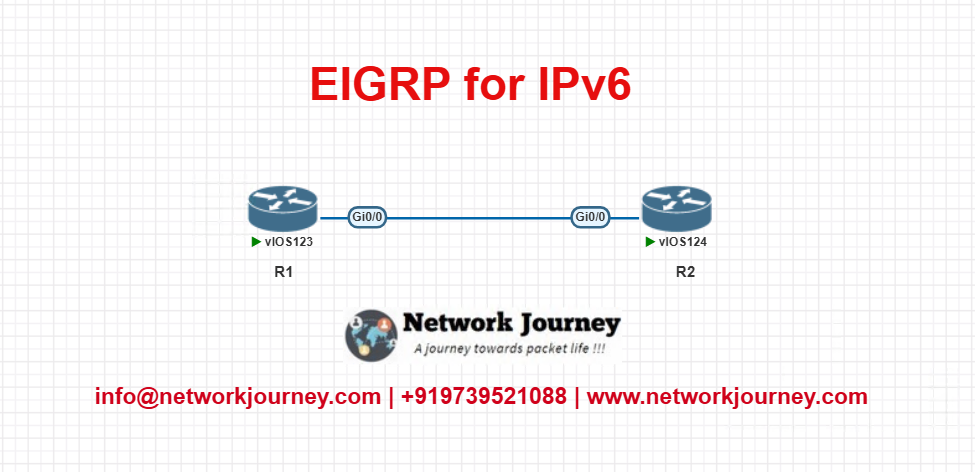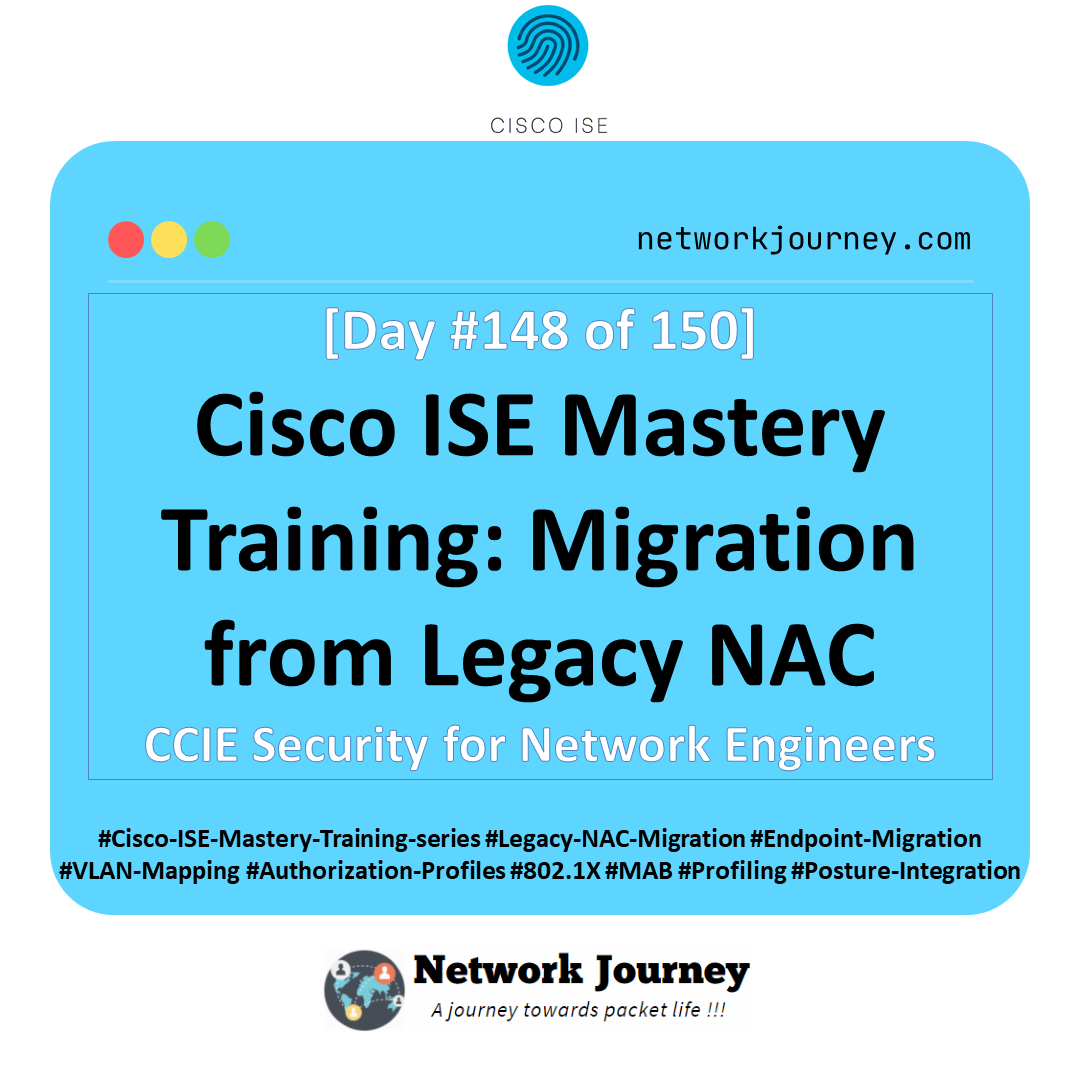EIGRP for IPv6 – Routing Smarter in the Next-Gen Network Era [CCNP ENTERPRISE]
In today’s networks, where IPv6 adoption is growing rapidly, you’ll need this skill not just for interviews and certifications but in real-world deployments too.
This post will take you step-by-step through:
- EIGRP for IPv6 theory
- Key differences from IPv4
- CLI commands
- Real lab in EVE-NG
- Troubleshooting tips
- Use cases
- And even some FAQs to clear your doubts
Let’s make EIGRP for IPv6 your comfort zone.
Table of Contents
Theory in Brief – What is EIGRP for IPv6?
EIGRP for IPv6 is an extension of the EIGRP protocol designed to support the IPv6 protocol stack. While the core DUAL algorithm (Diffusing Update Algorithm) and metric calculation are the same as IPv4, there are important architectural and configuration differences.
Key Concept
Just like with IPv4, EIGRP for IPv6:
- Shares routing info with neighbors
- Maintains topology tables
- Calculates best paths based on bandwidth and delay
- Supports rapid convergence and loop-free routing
But, there are major changes:
- No network command
- IPv6 needs to be enabled globally and per interface
- Uses link-local addresses for neighbor adjacencies
- Router ID is mandatory
Why It’s Different From EIGRP for IPv4
Unlike IPv4, EIGRP for IPv6:
- Does not use the global
networkcommand - Needs manual activation on each interface
- Uses IPv6 link-local addresses (FE80::/10) for neighbor communication
- Runs directly on interfaces, not through a central process
- Supports named EIGRP mode (from newer IOS versions)
These design changes make it more modular and secure.
Basic Steps to Configure EIGRP for IPv6:
- Enable IPv6 routing
- Assign IPv6 addresses to interfaces
- Enable EIGRP on each interface
- Set a router ID (mandatory)
- Enable the EIGRP routing process
Comparison – EIGRP for IPv4 vs IPv6
| Feature | EIGRP for IPv4 | EIGRP for IPv6 |
|---|---|---|
| Network Command | Required | Not used |
| Interface-based Activation | No | Yes |
| Use of Router ID | Optional | Mandatory |
| Address Type for Neighbors | IPv4 address | Link-local IPv6 address |
| Default Transport Protocol | IP protocol 88 | IP protocol 88 |
| Authentication | MD5/SHA | Same |
| Metric Calculation | K1-K5 (same formula) | Same |
| Configuration Simplicity | Slightly simpler | Slightly more manual |
Essential CLI Commands
| Command | Purpose |
|---|---|
ipv6 unicast-routing | Globally enables IPv6 routing |
interface g0/0ipv6 enable | Enables IPv6 on interface |
ipv6 address 2001:1::1/64 | Assigns IPv6 address |
ipv6 eigrp 100 | Starts EIGRP on the interface |
ipv6 router eigrp 100 | Enters EIGRP config mode |
router-id 1.1.1.1 | Sets the router ID (mandatory) |
no shutdown | Enables the EIGRP process |
show ipv6 eigrp neighbors | Lists EIGRP IPv6 neighbors |
show ipv6 eigrp topology | Displays EIGRP IPv6 routes and metrics |
show ipv6 route eigrp | Shows IPv6 routes learned via EIGRP |
Real-World Use Case
| Use Case Scenario | Why Use EIGRP for IPv6 |
|---|---|
| Branch office migrating to IPv6 | Simple setup, fast convergence |
| ISP with dual-stack infrastructure | Supports IPv6 without redesign |
| Enterprise WAN with future IPv6 expansion | Easy integration with existing IPv4 EIGRP setup |
| IoT or campus environments using IPv6 addressing | Quick reconvergence on link failures |
EVE-NG Lab: EIGRP for IPv6 Configuration
Lab Topology

IPv6 Details:
- R1 – G0/0:
2001:1::1/64 - R2 – G0/0:
2001:1::2/64 - Link-local: auto-assigned
CLI Configuration
On R1:
ipv6 unicast-routing
interface g0/0
ipv6 enable
ipv6 address 2001:1::1/64
ipv6 eigrp 100
ipv6 router eigrp 100
router-id 1.1.1.1
no shutdown
On R2:
ipv6 unicast-routing
interface g0/0
ipv6 enable
ipv6 address 2001:1::2/64
ipv6 eigrp 100
ipv6 router eigrp 100
router-id 2.2.2.2
no shutdown
Test Your Config:
ping 2001:1::2from R1show ipv6 eigrp neighborsshow ipv6 eigrp topology- Shut interface to test convergence
Troubleshooting Tips
| Symptom | Likely Issue | Command to Use |
|---|---|---|
| No neighbor formed | Missing IPv6 enable or router-id | show ipv6 eigrp neighbors |
| No routes in IPv6 table | Interface not enabled or passive | show ipv6 protocols, show run |
| EIGRP not starting | Forgot no shutdown or router-id | show ipv6 router eigrp |
| Ping failing between routers | IPv6 not configured correctly | show ipv6 interface brief |
| Wrong metric/path selection | Link delay/bandwidth not configured | show ipv6 eigrp topology |
FAQs – What Most Engineers Ask
1. What is EIGRP for IPv6, and how is it different from EIGRP for IPv4?
Answer:
EIGRP for IPv6 is an enhanced version of the EIGRP protocol, specifically designed to support IPv6 networks. While the core concepts—like DUAL algorithm, metric calculation, and route summarization—remain the same, EIGRP for IPv6 operates independently from IPv4. Key differences include:
- No automatic network statement (
networkcommand is not used). - Requires enabling the routing process per interface.
- Uses link-local addresses for neighbor adjacencies.
2. Do we need to use the network command in EIGRP for IPv6?
Answer:
No. In IPv6, the network command is not used to enable EIGRP. Instead, you enable EIGRP directly on each interface using:
ipv6 eigrp <ASN>
The EIGRP process is activated per-interface rather than relying on network summarization.
3. What is the significance of link-local addresses in EIGRP for IPv6?
Answer:
EIGRP for IPv6 uses link-local addresses (fe80::/10) for all neighbor communications. These addresses are only valid on a single link (segment) and cannot be routed. They ensure EIGRP adjacency and communication between directly connected neighbors.
4. How do I enable EIGRP for IPv6 on a router?
Answer:
Here’s a quick 4-step guide:
ipv6 unicast-routing
ipv6 router eigrp 100
router-id 1.1.1.1
no shutdown
!
interface GigabitEthernet0/0
ipv6 enable
ipv6 eigrp 100
Make sure to assign a router ID, as IPv6 EIGRP doesn’t auto-select it like IPv4 does.
5. Can I use route summarization in EIGRP for IPv6?
Answer:
Yes, but it must be done manually. Unlike IPv4 where auto-summarization exists (though it’s disabled by default), IPv6 requires explicit summarization configuration on the interface:
interface GigabitEthernet0/0
ipv6 summary-address eigrp 100 2001:db8:1::/64
6. Does EIGRP for IPv6 support equal and unequal cost load balancing?
Answer:
Absolutely. Just like in IPv4:
- Equal-cost load balancing is enabled by default.
- Unequal-cost load balancing can be achieved using the
variancecommand in router configuration mode.
Example:
ipv6 router eigrp 100
variance 2
This allows routes with a metric up to 2 times the best metric to be used.
7. How can I view EIGRP for IPv6 neighbors and routes?
Answer:
Use the following commands:
- View neighbors:
show ipv6 eigrp neighbors
- View routing table:
show ipv6 route eigrp
- View topology:
show ipv6 eigrp topology
These are your best friends during troubleshooting and verification.
8. What is the role of the Router-ID in EIGRP for IPv6?
Answer:
Since IPv6 addresses are 128-bit and EIGRP still relies on a 32-bit Router-ID, you must manually configure the Router-ID:
ipv6 router eigrp 100
router-id 1.1.1.1
Without it, the process won’t run. This ID must be unique within the EIGRP domain.
9. Are there any authentication mechanisms in EIGRP for IPv6?
Answer:
Yes. EIGRP for IPv6 supports IPSec-based authentication instead of MD5 or SHA as in IPv4. You can configure IPSec policies to secure neighbor relationships. This adds a layer of integrity and protection against spoofing or rogue routers.
10. What are the common reasons EIGRP for IPv6 adjacencies fail to form?
Answer:
Here are some of the most frequent culprits:
- Interface not enabled for IPv6.
- No Router-ID configured.
- EIGRP process is in shutdown state.
- Mismatch in ASN between neighbors.
- Interfaces on different subnets (remember: link-local is used!).
YouTube Lab – Watch It in Action
Watch the Complete CCNP Enterprise: EIGRP for IPv6 – Routing Smarter in the Next-Gen Network Era Lab Demo & Explanation on our channel:
Final Thoughts – Make IPv6 Routing Easy
Learning EIGRP for IPv6 is not a reinvention of the wheel — it’s just a different shape of the same concept. If you take away one thing from this post, let it be this:
Understand the key differences (no network command, link-local addresses)
Lab it in EVE-NG — not once, but twice
Troubleshoot usingshowanddebug– your best friends
As always, it’s not about just passing CCNP or CCIE — it’s about being the engineer who knows why and not just how.
Stay consistent, keep building labs, and I’ll see you in the next deep dive.
Final Note
Understanding how to differentiate and implement EIGRP for IPv6 – Routing Smarter in the Next-Gen Network Era is critical for anyone pursuing CCNP Enterprise (ENCOR) certification or working in enterprise network roles. Use this guide in your practice labs, real-world projects, and interviews to show a solid grasp of architectural planning and CLI-level configuration skills.
If you found this article helpful and want to take your skills to the next level, I invite you to join my Instructor-Led Weekend Batch for:
CCNP Enterprise to CCIE Enterprise – Covering ENCOR, ENARSI, SD-WAN, and more!
Get hands-on labs, real-world projects, and industry-grade training that strengthens your Routing & Switching foundations while preparing you for advanced certifications and job roles.
Email: info@networkjourney.com
WhatsApp / Call: +91 97395 21088
Upskill now and future-proof your networking career!
![EIGRP for IPv6 – Routing Smarter in the Next-Gen Network Era [CCNP ENTERPRISE]](https://networkjourney.com/wp-content/uploads/2025/07/EIGRP-for-IPv6-–-Routing-Smarter-in-the-Next-Gen-Network-Era_networkjourney-1.png)


![[Day 20] Cisco ISE Mastery Training: Configuring Authorization Profiles](https://networkjourney.com/wp-content/uploads/2025/08/Day-20-Cisco-ISE-Mastery-Training-Configuring-Authorization-Profiles.png)